Medical DataMonitoring Biometric Parameters
at the right time wherever a patient lives..
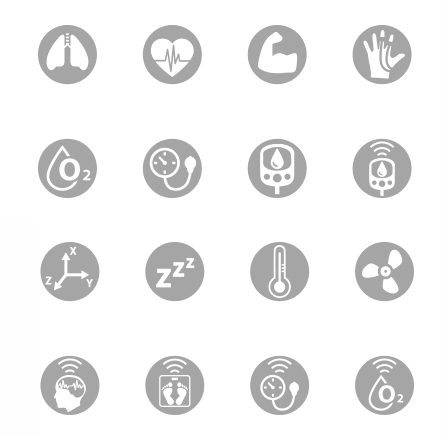
Wired and wireless sensors
The e-Health-Connect IoT Platform is used to monitor in real time the state of a patient or to get sensitive data in order to be subsequently analysed for biometric analysis
The e-Health-Connect IoT Platform allows to measure 20 different biometric parameters such as pulse, breath rate, oxygen in blood, electrocardiogram signals, blood pressure, muscle electromyography signals, glucose levels, galvanic skin response, lung capacity, snore waves, patient position, airflow and body scale parameters (weight, bone mass, body fat, muscle mass, body water, visceral fat, Basal Metabolic Rate and Body Mass Index). These broad sensing portfolio makes e-Health-Connect the most complete eHealth platform in the market.
Sensors comunicate locally with the e-Health-Connect Data Publisher (Data2med® wearable Box) which can wirelessly sent the gathered biometric information to the Cloud using two connectivity options: Wi-Fi or BLE (Bluetooth Low Energy 4.0).
Depending if they are wireless or not, the sensors communicate with the Sensor Data Publisher Module (Data2med® Box) in a Standalone Mode (the sensor is connected by jack-connectors or in a Bluetooth Connection Mode (the sensors communicate wirelessly).
Clinical Interest
Here are the main sensors used with the e-Health-Connect IoT Platform with their description and clinical interest.
Glucometer
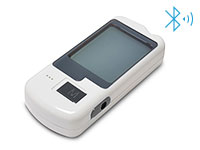
Glucometer is a medical device for determining the approximate concentration of glucose in the blood. A small drop of blood, obtained by pricking the skin with a lancet, is placed on a disposable test strip that the meter reads and uses to calculate the blood glucose level. The meter then displays the level in mg/dl or mmol/l.
Despite widely variable intervals between meals or the occasional consumption of meals with a substantial carbohydrate load, human blood glucose levels tend to remain within the normal range. However, shortly after eating, the blood glucose level may rise, in non-diabetics, temporarily up to 7.8 mmol/L (140 mg/dL) or a bit more.
Blood Pressure Monitor

Blood pressure is the pressure of the blood in the arteries as it is pumped around the body by the heart. When heart beats, it contracts and pushes blood through the arteries to the rest of the body. This force creates pressure on the arteries. Blood pressure is recorded as two numbers—the systolic pressure (as the heart beats) over the diastolic pressure (as the heart relaxes between beats).
Monitoring blood pressure is important for many people, especially if they have high blood pressure. Blood pressure does not stay the same all the time. It changes to meet your body’s needs. It is affected by various factors including body position, breathing or emotional state, exercise and sleep.
Pulse and Oxygen in Blood SPO2
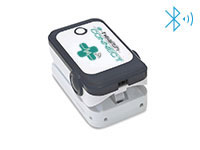
Pulse oximetry a noninvasive method of indicating the arterial oxygen saturation of functional hemoglobin.
Oxygen saturation is defined as the measurement of the amount of oxygen dissolved in blood, based on the detection of Hemoglobin and Deoxyhemoglobin. Two different light wavelengths are used to measure the actual difference in the absorption spectra of HbO2 and Hb. The bloodstream is affected by the concentration of HbO2 and Hb, and their absorption coefficients are measured using two wavelengths 660 nm (red light spectra) and 940 nm (infrared light spectra). Deoxygenated and oxygenated hemoglobin absorb different wavelengths.
Spirometer Peak Flow Meter
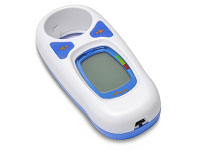
Spirometry (meaning the measuring of breath) is the most common of the pulmonary function tests (PFTs), measuring lung function, specifically the amount (volume) and/or speed (flow) of air that can be inhaled and exhaled. Spirometry is an important tool used for generating pneumotachographs, which are helpful in assessing conditions such as asthma, pulmonary fibrosis, cystic fibrosis, and COPD.
Spirometer Peak Flow Meter is a hand-held pulmonary function measuring device that measures your maximum possible exhalation which is called peak expiratory flow (PEF) and forced expiratory volume in 1 second (FEV1).
- Forced expiratory flow (FEF) is the flow (or speed) of air coming out of the lung during the middle portion of a forced expiration.
- Forced expiratory volume in 1 second (FEV1) is the volume of air that can forcibly be blown out in one second, after full inspiration. Average values for FEV1 in healthy people depend mainly on sex and age, according to the diagram at left. Values of between 80% and 120% of the average value are considered normal.
Snore
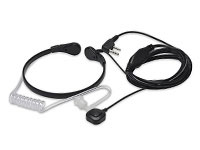
Snoring is a major symptom of obstructive sleep apnea (OSA). In most sleep studies, snoring is detected with a microphone. Since these studies analyze the acoustic properties of snoring, they need to acquire data at high sampling rates, so a large amount of data should be processed. Recently, several sleep studies have monitored snoring using a piezo snoring sensor. However, an automatic method for snoring detection using a piezo snoring sensor has not been reported in the literature. This study proposed the HMM-based method to detect snoring using this sensor, which is attached to the neck. The data from 21 patients with OSA were gathered for training and test sets. The short-time Fourier transform and short-time energy were computed so they could be applied to HMMs. The data were classified as snoring, noise and silence according to their HMMs. As a result, the sensitivity and the positive predictivity values were 93.3% and 99.1% for snoring detection, respectively. The results demonstrated that the method produced simple, portable and user-friendly detection tools that provide an alternative to the microphone-based method.
This sensor attaches to the neck and records vibration. The sensor converts snoring, and other sounds in the audio range picked up through the skin, to a small analog voltage that provides a clear, reliable indication of the presence of these sounds.
Electrocardiogram (ECG)
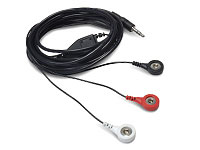
The Electrocardiogram Sensor (ECG) has grown to be one of the most commonly used medical tests in modern medicine. Its utility in the diagnosis of a myriad of cardiac pathologies ranging from myocardial ischemia and infarction to syncope and palpitations has been invaluable to clinicians for decades.
The electrocardiogram (ECG) is a diagnostic tool that is routinely used to assess the electrical and muscular functions of the heart. The sensor use “Continuous telemetry electrocardiogram" for a prolonged monitoring including the use of three ECG electrodes.
Electromyography (EMG)
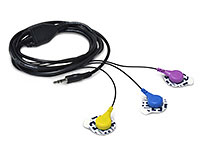
Electromyography (EMG) is an electrodiagnostic medicine technique for evaluating and recording the electrical activity produced by skeletal muscles. EMG is performed using an instrument called an electromyograph, to produce a record called an electromyogram. An electromyograph detects the electric potential generated by muscle cells when these cells are electrically or neurologically activated. The signals can be analyzed to detect medical abnormalities, activation level, or recruitment order, or to analyze the biomechanics of human or animal movement.
EMG testing has a variety of clinical and biomedical applications. EMG is used as a diagnostics tool for identifying neuromuscular diseases, or as a research tool for studying kinesiology, and disorders of motor control. EMG signals are sometimes used to guide botulinum toxin or phenol injections into muscles. EMG signals are also used as a control signal for prosthetic devices such as prosthetic hands, arms, and lower limbs.
There are two kinds of EMG: surface EMG and intramuscular EMG. Surface EMG assesses muscle function by recording muscle activity from the surface above the muscle on the skin. Surface electrodes are able to provide only a limited assessment of the muscle activity. Surface EMG can be recorded by a pair of electrodes or by a more complex array of multiple electrodes. More than one electrode is needed because EMG recordings display the potential difference (voltage difference) between two separate electrodes. Limitations of this approach are the fact that surface electrode recordings are restricted to superficial muscles, are influenced by the depth of the subcutaneous tissue at the site of the recording which can be highly variable depending of the weight of a patient, and cannot reliably discriminate between the discharges of adjacent muscles.
An electromyograph detects the electrical potential generated by muscle cells when these cells are electrically or neurologically activated. The signals can be analyzed to detect medical abnormalities, activation level, recruitment order or to analyze the biomechanics of human or animal movement.
EMG signals are used in many clinical and biomedical applications. EMG is used as a diagnostics tool for identifying neuromuscular diseases, assessing low-back pain, kinesiology, and disorders of motor control. EMG signals are also used as a control signal for prosthetic devices such as prosthetic hands, arms, and lower limbs.
This sensor will measure the filtered and rectified electrical activity of a muscle, depending the amount of activity in the selected muscle.
Galvanic Skin Response (GSR)
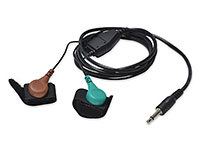
Skin conductance, also known as galvanic skin response (GSR) is a method of measuring the electrical conductance of the skin, which varies with its moisture level. This is of interest because the sweat glands are controlled by the sympathetic nervous system, so moments of strong emotion, change the electrical resistance of the skin. Skin conductance is used as an indication of psychological or physiological arousal, The Galvanic Skin Response Sensor (GSR - Sweating) measures the electrical conductance between 2 points, and is essentially a type of ohmmeter.
This sensor measures the electrical conductance of the skin, which varies with its moisture level. This is of interest because the sweat glands are controlled by the sympathetic nervous system, so moments of strong emotion, change the electrical resistance of the skin.
Airflow

Anormal respiratory rates and changes in respiratory rate are a broad indicator of major physiological instability, and in many cases, respiratory rate is one of the earliest indicators of this instability. Therefore, it is critical to monitor respiratory rate as an indicator of patient status. AirFlow sensor can provide an early warning of hypoxemia and apnea.
The nasal / mouth airflow sensor is a device used to measure the breathing rate in a patient in need of respiratory help or person. This device consists of a flexible thread which fits behind the ears, and a set of two prongs which are placed in the nostrils. Breathing is measured by these prongs.
Temperature

Body temperature depends upon the place in the body at which the measurement is made, and the time of day and level of activity of the person. Different parts of the body have different temperatures.
The commonly accepted average core body temperature (taken internally) is 37.0°C (98.6°F). In healthy adults, body temperature fluctuates about 0.5°C (0.9°F) throughout the day, with lower temperatures in the morning and higher temperatures in the late afternoon and evening, as the body's needs and activities change.
Body Scale

Weighing scales (or weigh scales or scales) are devices to measure weight or calculate mass. Spring balances or spring scales measure weight (force) by balancing the force due to gravity against the force on a spring, whereas a balance or pair of scales using a balance beam compares masses by balancing the weight due to the mass of an object against the weight of a known mass or masses.
Multipurpose personal portable digital weight health body scale.
Monitor your body weight like never before with a digital wireless body fat monitor. This bathroom scale uses a BLE connection to sync your weight, BMI, and body fat readings with your personal health dashboard.